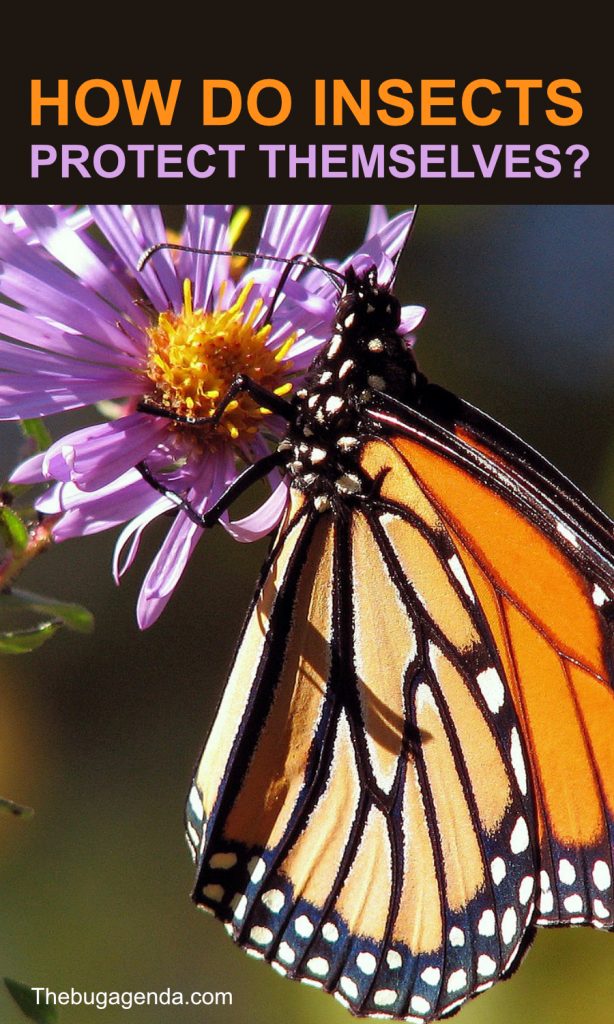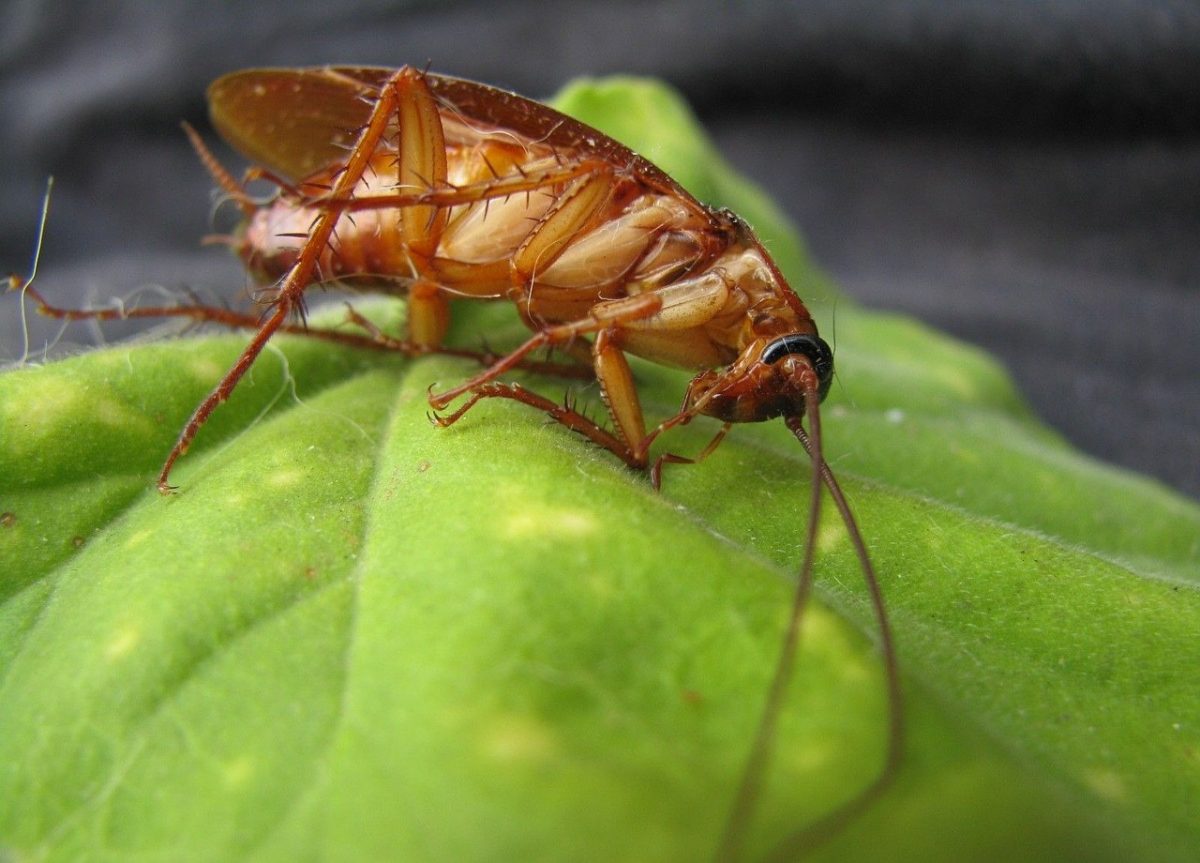One morning, my gorgeous furry feline had an unpleasant encounter with what appeared to be a beetle. She fiddled with it momentarily, but after attempting to eat it, she bolted like the wind, while smacking her lips, as if trying to spit out something unpleasant.
Watching that encounter got me thinking about how insects protect themselves from predators. Clearly, the beetle won its battle with my cat because whatever defense mechanism it summoned got my feline to let it be.
Like this beetle that was less than a quarter in size, how do insects protect themselves from predators? What insect defense mechanisms are available for conjuring when these creatures feel threatened?
Let’s consider a few defense mechanisms insects use to navigate this dog-eat-dog world.

How Do Insects Protect Themselves from Predators
Insect Chemical Defense
Although not the only bug defense, many insects create toxic substances to repel and, sometimes, make their predators sick, even if they succumb to an unfortunate death.
Let’s consider a few insect chemical defense mechanisms and insects that are likely to put up a fight for their life.
- Sickly Poison
This is a common insect defense mechanism used by many insects that are prone to end up in the stomach of another animal.
Although exquisite in appearance, radiating dazzling shades of brown and burnt orange and dotted white patterns, the monarch butterfly is a common example.
Even its brilliant color is a defense mechanism. Animals who’ve had previous unfortunate encounters know not to proceed because of its color.
As a caterpillar, the monarch butterfly feeds from the toxic milkweed plant. This toxin gives the insect all the ammunition it needs to inflict a temporary blow on its aggressors when eaten. Although the monarch is eventually eaten, it leaves the vertebrate sick (even vomiting) for a time.
How does this insect defense mechanism serve monarchs? The next time a predator spots a bunch of monarchs lounging, it’s less likely to interfere with it.
Humans are forgiving, and sometimes may forget some encounters, but most predators who get sick because of a monarch butterfly often keep their distance.
- Yucky Odour
The shore earwig is an insect producing a nasty odor as a bug defense that’s repulsive to predators. Their odor is likened to rotting flesh or poop. Once a predator attempts to eat a shore earwig, they are in for a rude awakening.
For more details on this insect defense mechanism in shore earwigs, please read this article (after completing this one, of course).
From that article, you’ll also learn that stink bugs release a foul-smelling odor when threatened, which is also a defense mechanism.s
- A Window of Escape
If you’re trapped in a building on fire, and a window was your only escape, there’s no second-guessing. You’d climb right out. I termed this insect defense mechanism “a window of escape” because that’s exactly what it provides for preys.
Think about the beetle spoken of from the outset. After much digging and comparing the appearance of the tiny beetle I saw, it may belong to the family of stink beetles (pinacate beetles). They belong to the genus Eleodes.
With the release of a stinking chemical, these beetles induce cleaning in their predators when an attempted ingestion is made. Since the predator’s natural reaction is to clean the putrid odor and flavor from its mouth, the beetle would have a window or exit to get out of harm’s way. This insect defense mechanism is common in black beetles.
This brings our attention to another beetle belonging to the same family.
Are you a beetle lover? You may be interested in reading this article about green iridescent beetles.
- A Painful Touch and a Scalding Spray
The blister beetle got that moniker for a reason. This beetle releases a toxic chemical that is said to cause skin blisters. This beetle is also called the “American oil beetle” because of the oily substance it excretes when disturbed.
Another beetle who’s not afraid of a showdown is the bombardier beetle. That’s right; even its very name sounds frightening, and it is. This beetle is dubbed the “master of chemical warfare”. It creates a boiling, caustic chemical from its body that can kill other insects, like ants.
For live action on how some insects defend themselves using chemicals, I’d suggest watching the video below. It’s quite the showdown, and you’ll marvel at how creation is setup to protect itself.
Gone with the Wind
‘Fleeing’ is an age-old method used to protect oneself. As humans, we do it all the time. When trouble strikes and danger looms, you don’t need to prod a person to flee the scene.
Insects do it, too.
And this insect defense mechanism serves them well.
A house cockroach, for example, knows how to go with the wind. These insects can glide so quickly they’ll have you questioning your sanity, whether you really saw something, or just hallucinating.
The cockroach was built to be elusive. It has a stiff structure resembling a hair or bristle brush called seta (setae for plural). These normally exist on the rear-most segments of arthropods and are referred to as cerci (cercus for singular).
Once setae detect a change in air pressure (for example, you are standing above them with a big ol’ boot ready to go in for the kill), they move as fast as they possibly can. This response is almost lightning-quick, as it’s often done in less than 50 milliseconds.
If only we could run as fast as cockroaches, eh? Plenty of us would dodge some pretty grimy situations. Not to mention, we’d beat Usain Bolt, the fastest man alive, at his craft.
By the way, if you’re haunted by cockroaches at home and are looking for suggestions to get rid of them, consider reading this article (after this one, of course).
Let’s Play Dead
While some insects doge predators by running away, some actually stay and hope.
Smart or foolish?
I’ll let you be the judge of that.
Some insect defense mechanisms include playing dead. The fancy term professionals use is Thanatosis. When a predator nears, all voluntary activities of an insect shut down and they get into a dead-like posture that often dupes its predator.
The click beetle is an excellent insect to use as an exhibition. When touched, this brightly colored insect will plop on its back and play dead. Is this the only beetle that loves to play dead?
The blue death feigning beetle is also a spectacle to behold. From its name, you’d have realized that they live for pretending to die. (Geesh…If only I had this superpower!)
How Do Insects Protect Themselves from Predators
To conclude, insects use a variety of defense mechanisms to protect themselves from predators. Whether it’s by shooting out caustic chemicals, playing dead, or fleeing the scene, these are all necessary for their survival.
What other insect defense mechanisms that I’ve not included on this list have you witnessed? Shout out in the comments section and I’ll be sure to update the information.
If you found value in this article on “how do insects protect themselves from predators” please share by pinning on Pinterest or posting on your favorite social media platform.
Thanks for reading, and see you in the next one.





